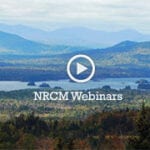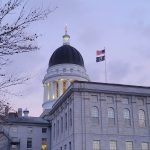Senator Brenner, Representative Tucker, and Members of the ENR Committee:
My name is Nick Bennett, and I am the staff scientist for the Natural Resources Council of Maine (NRCM), which is Maine’s largest environmental advocacy group with more than 25,000 members and supporters. I am testifying in support of LD 1964.
Both Maine and federal law require that the Department of Environmental Protection (DEP) assess the waters of the state and the standards that protect them every three years. This is called DEP’s “Triennial Review.” Based on this review, DEP recommends upgrades in protections for waterbodies for which new data show attainment of higher levels of quality than their existing water quality classification would indicate. This can occur simply because DEP now has more accurate data than it did in the past or because progress has been made in cleaning up particular river segments. Sometimes, DEP will recommend an upgrade for a waterbody that is close to meeting water quality standards to provide an extra incentive for cleanup, or because it knows that an action in the near future will improve water quality. A good example of this occurred when DEP recommend an upgrade to the Kennebec River between Waterville and Augusta prior to the removal of the Edwards Dam when it became clear that the dam would eventually be removed. Removal of the dam resulted in greater flushing and oxygenation of the river segment, allowing it to meet higher water quality standards and increasing the vibrancy and diversity of aquatic life.
This year’s Triennial Review, as approved by the Board of Environmental Protection (BEP), recommends upgrades for more than 800 miles of rivers and streams. Given that the Committee will also consider LD 1979 this session, I wish to highlight upgrades in LD 1964 that affect the Kennebec River watershed. These include:
- South Branch Sandy River and its tributaries, important spawning streams for Atlantic salmon and brook trout, Class A to AA.
- Orbeton Stream and its tributaries, important spawning streams for Atlantic salmon and brook trout, Class A to AA.
These waterbodies are particularly important to Atlantic salmon restoration because they are fed by cool, clean, high-elevation streams and are likely highly resilient to a warming climate. They are some of the best Atlantic salmon spawning and rearing habitat in the United Sates and deserve the protection and recognition that AA classification gives them. However, salmon cannot access these streams because of Brookfield’s four dams between Waterville and Skowhegan, which lack effective fish passage. LD 1979 would make it likely that salmon would never be able to access this outstanding habitat. It would be ironic indeed were the Legislature to approve the upgrades to these waterbodies and at the same time pass LD 1979, a bill that make virtually certain Atlantic salmon never reach these waters except via a tank truck. This is how a few fish get there every year currently after they are trapped at Brookfield’s Lockwood Dam in Waterville.
There is one other river segment that NRCM supports upgrading that is not part of the package the BEP approved late last year: the lower Presumpscot. NRCM understands there will be an amendment proposing the upgrade of this segment from Saccarappa Falls to tidewater. Recent DEP data show this segment of the Presumpscot attaining Class B standards. We believe it was a mistake that BEP chose not to recommend the upgrade of this river segment. We urge the ENR Committee to correct this mistake, which it has the authority to do. We also urge you to pay special attention to the testimony of Friends of the Presumpscot, Friends of Casco Bay, and The Nature Conservancy, who will prove more detailed technical discussion of this upgrade in their testimony.
In closing, NCRM urges the Committee to vote ought-to-pass on LD 1964 and support the amendment adding the upgrade of the Lower Presumpscot. Passing LD 1964 as amended would be a particularly fitting tribute to Senator Edmund Muskie because 2022 is the 50th anniversary of his Clean Water Act.
Thank you for the opportunity to testify on this bill.










